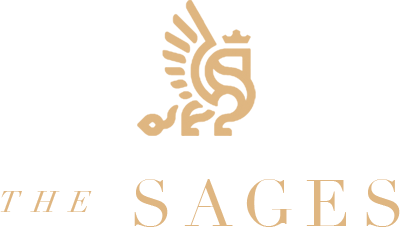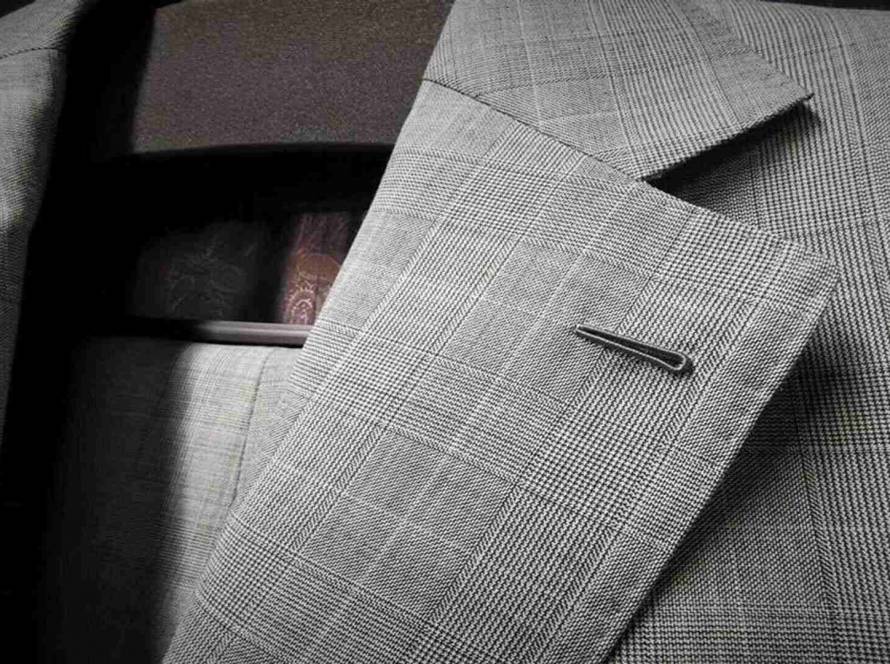The double-breasted suit, also known as a two-button suit, is gaining popularity among many individuals. However, not everyone knows what makes a well-fitted double-breasted suit. Join The Sages in exploring this article to understand what constitutes a perfectly tailored double-breasted suit.
Table of Contents
WHAT IS A WELL-FITTED SUIT?
In general, nobody wants to invest a significant amount in a tailored suit only to end up with an ill-fitting result. A well-fitted garment enhances the natural contours of the body by shaping key areas. The clothing should be tailored closely without creating any pulling, wrinkles, or tension. You desire a suit with sharp cuts that accentuate the body’s natural shape. The rules for a well-fitted double-breasted jacket are similar to those for a single-breasted jacket.
HOW TO RECOGNIZE A WELL-FITTED DOUBLE-BREASTED SUIT
SHOULDER
When it comes to the shoulders of a double-breasted suit, the jacket’s shoulder line should align with your natural shoulder width. The sleeves should gracefully fall at the shoulder seam without any protrusion or imbalance. Avoid a smaller or oversized look. In the past, double-breasted suits were traditionally designed with structured shoulders and a subtle shoulder head roll. However, a modern double-breasted jacket offers a variety of styles and sizes, including unstructured options for a more relaxed and natural shoulder appearance.
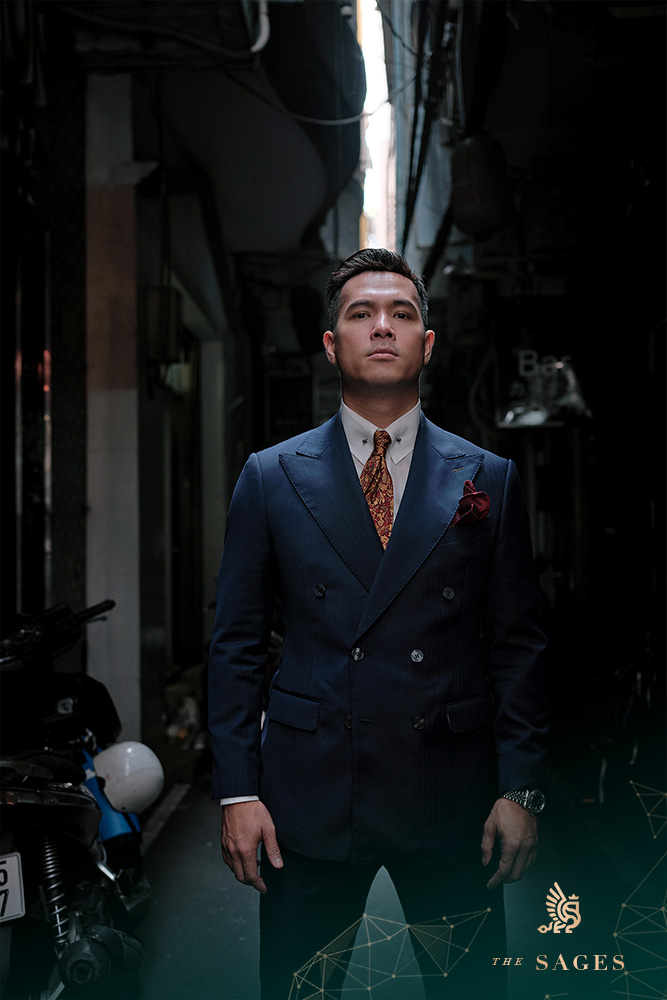
A premium double-breasted bespoke suit tailored by The Sages Bespoke
COLLAR
When it comes to the collar of a double-breasted suit, it should fit snugly around the dress shirt collar without any visible gaps. The dress shirt collar should extend about 1-1.5cm above the jacket collar, and the jacket collar should remain smooth and unwrinkled against the neck. Opt for a dress shirt collar size that allows the collar points to be neatly concealed under the suit lapel.
CHEST
The front chest should be flat and smoothly drape over the wearer’s chest. If the suit jacket is too loose in the chest, it will create excess fabric bunching in the front under the armpits. On the other hand, if the chest is too tight, the lapels may lift and not lay flat, while the sleeves may be pulled or wrinkled from the lower armpit area.
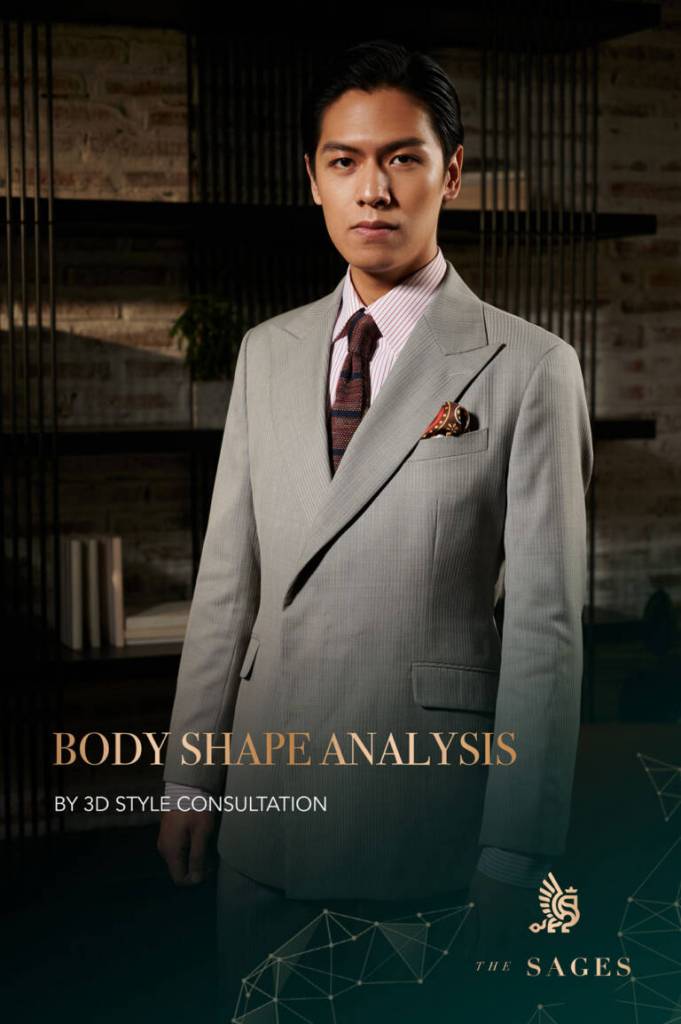
A hidden button double-breasted bespoke suit inspired by the movie Kingsman
JACKET LENGTH
A well-fitted double-breasted suit jacket should have a slightly longer length compared to a single-breasted jacket. This prevents it from appearing boxy and elongates the body proportionately. The back length of the jacket should extend just beyond the buttocks, while the front length should adequately cover the waistband. To ensure a balanced and polished look, the jacket should sit parallel to the ground, maintaining a straight and level silhouette without tilting forward or backward.
WAIST
The waist area is a crucial element of the cut that defines a double-breasted suit jacket. However, many double-breasted suits suffer from excessive looseness around the waist, resulting in a boxy look rather than a flattering silhouette. The waist of a double-breasted suit jacket should be meticulously tailored to eliminate any unnecessary fabric while ensuring there is no strain at the button. It should be contoured to match the fit of a well-fitted single-breasted jacket. The button stance, typically at the narrowest point of the jacket (usually the waist), should align with your body’s smallest area to minimize any tension or pulling.
JACKET BUTTONING
When it comes to buttoning your jacket, just like with a single-breasted suit, you can leave the bottom button unfastened. This will give the jacket a more elegant appearance. In addition, the hidden interior button should always be securely fastened to keep the double-breasted jacket’s flaps from drooping. Although it may be a bit tricky to button this hidden button, make sure it sits flat on the jacket’s waist.
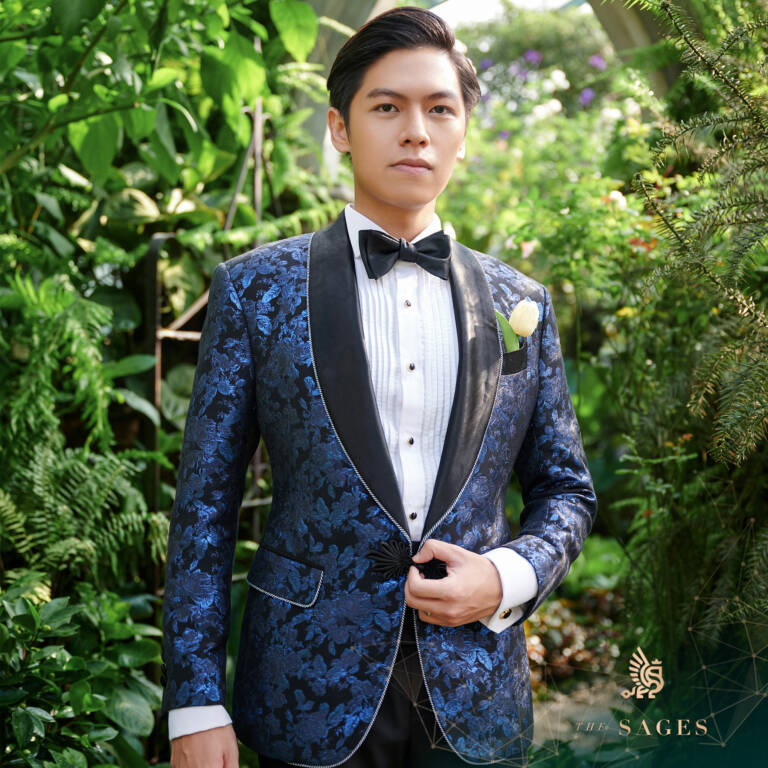
A bespoke double-breasted wedding tuxedo tailored by The Sages Bespoke
HIP
On the hip of the jacket, it is important to ensure complete coverage, with the vent lying straight and flat. If the jacket is too tight, the vent may spread open, while if it is too loose, the back hem of the jacket may flare out or resemble waving curtains. The body line and vent should be well-aligned, directed straight downwards without any flare.
NUMBER OF BUTTONS
Double-breasted suits come in different variations, denoted by a formula: “total number of front buttons” x “number of functional front buttons.” For instance, the suit featured in this article is a 6×2, which is the most popular and traditional style. Another common double-breasted option is the 4×2, where there are no buttons on the chest. On the other hand, variations like 6×1, 4×1, or 2×1 have only one functional button on the front, resulting in a lower button placement. This creates a longer buttoning line, which can pose challenges for tailors in achieving a smooth and flat line from the chest to the waist.
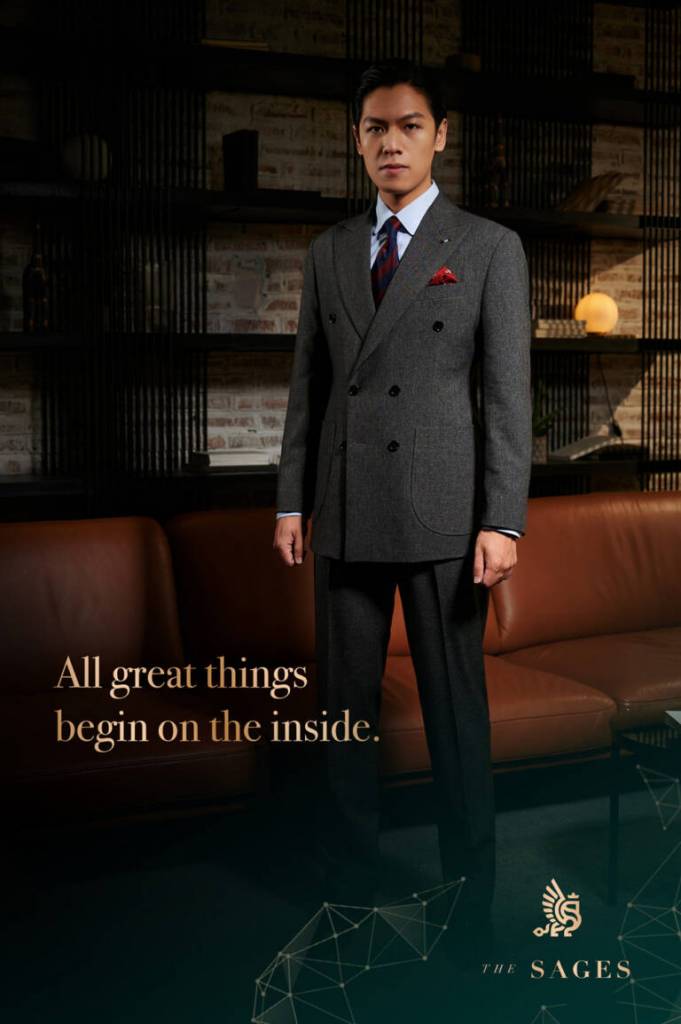
A premium bespoke 6×2 double-breasted suit tailored by The Sages Bespoke
JACKET SLEEVES
Well-groomed sleeves can greatly enhance the look of your suit. The sleeves should be neatly tailored, providing both a sleek appearance and unrestricted movement. It is important to consider the height of the armhole (higher is better without sacrificing comfort) and the rotation of the sleeves. A quality jacket will have smooth and wrinkle-free sleeve heads, with no creases or twists along the arms. The fabric on the sleeves should appear smooth and tidy, even in a relaxed state.
JACKET LENGTH
When in a relaxed state, the shirt cuff should protrude approximately 1.5 – 2 cm beyond the suit jacket sleeve. The shirt cuff should be tailored to rest at the beginning of the hand, with a slight allowance of extra fabric to accommodate arm movement comfortably.
After reading this article, you now have a better understanding of what makes a double-breasted suit fit well and why it is crucial for the overall value of a bespoke men’s suit. If you still have any lingering questions or would like to delve deeper into the topic, don’t hesitate to contact us through our hotline at +84 886 219 608 or reach out to us via our Facebook fan page. We’re here to provide you with further assistance and guidance.
